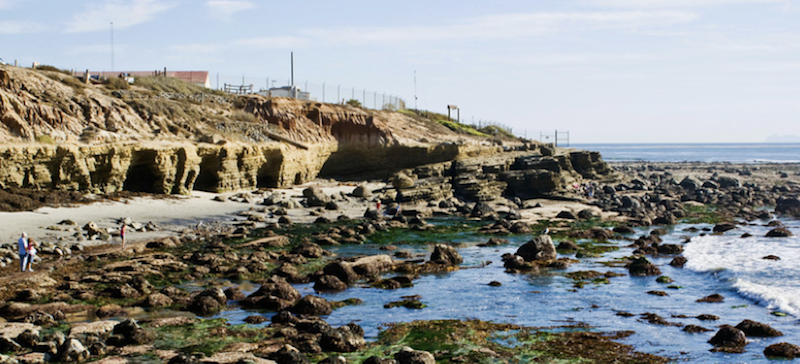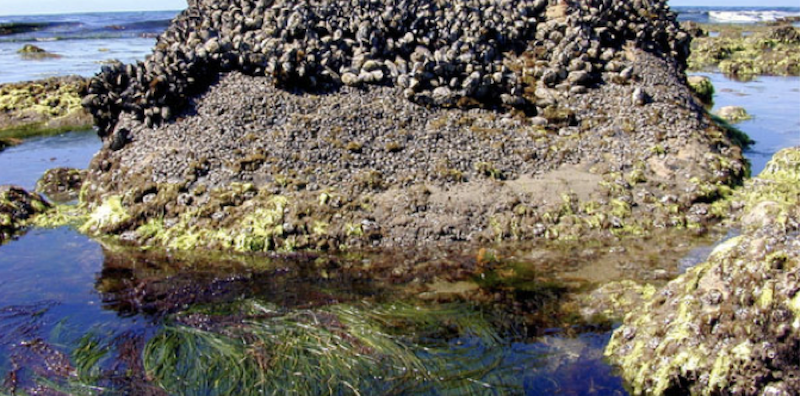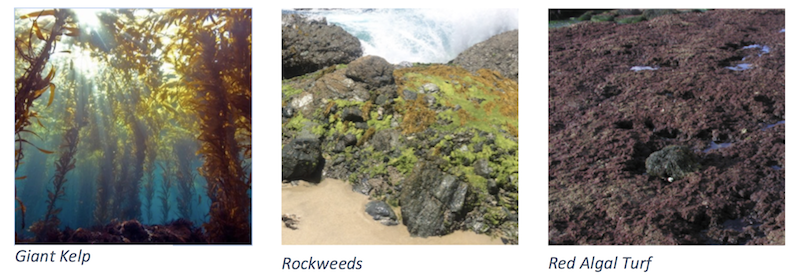
Take, for example, that pink rock over there. That’s not just a rock. It’s pink because there is encrusting red algae growing on it. What about those black areas on the rocks in the high intertidal? That’s alive, too. Those “tar spots” are an alternate life stage of some species of red seaweeds. That brown stuff you’re walking on? Seaweed. The green carpet-looking stuff? Seaweed. That long stuff that looks like grass? Okay, that is actually seagrass but hey, you get the idea.
The seaweeds are an extremely diverse group of marine plants which, like land plants, harness the sun’s energy to make their own food in a process called photosynthesis. Unlike terrestrial plants, however, they don’t specifically use their roots (called holdfasts) to uptake nutrients, and can instead intake nutrients from any part of their body (called the thallus). Seaweeds range from microscopic single cells to the large kelps that make up famous kelp forests off our coast. Seaweeds are classified into the reds, greens, or browns depending on the special photosynthetic pigments in their cells, and are adapted to withstand all kinds of conditions. These adaptations lead to different species growing in different areas of the intertidal, leading to a distinct zonation pattern.

The large kelps off the coast, for example, grow tall and have large, gas-filled floats called pneumatocysts that buoy their leaves (blades) closer to the sun. The rockweeds grow on the tops of rocks in the mid to low intertidal zones and must withstand heavy wave action, and so have strong branches and holdfasts. The turf growing in the high intertidal zone must withstand long, variable periods of high heat and no water, and so are adapted to grow to short lengths and in dense clumps to preserve water. Some seaweeds have special chemicals in their cells that make them taste bad to predators, while others protect themselves with calcium-carbonate shells, similar to corals (hence their name, coralline algae). Some seaweeds are toxic to humans and other animals, while some are harvested and used in things like sushi, ice cream, and even toothpaste!

As you can see, there is a lot of algae out there, and they need our help. Climate change, ocean acidification, and invasive species are all threats to these sensitive organisms. Healthy seaweed communities are essential to maintaining healthy coastal ecosystems because they provide habitat and food to a great diversity of life. So, next time you go to the tidepools and claim you haven’t seen anything cool, I challenge you to take a closer look. Notice the vibrant greens, reds, and browns of the seaweeds. Chances are, pretty much everything you’re looking at is alive.
